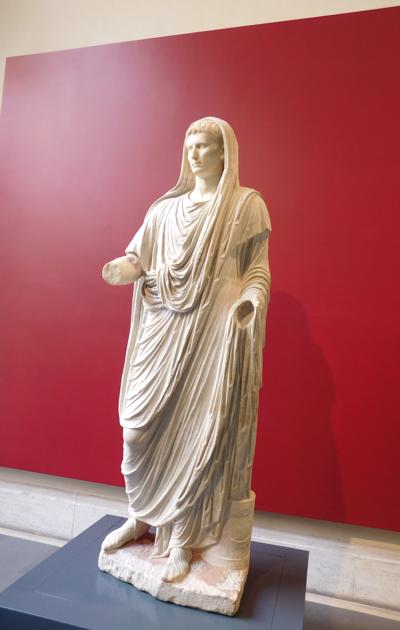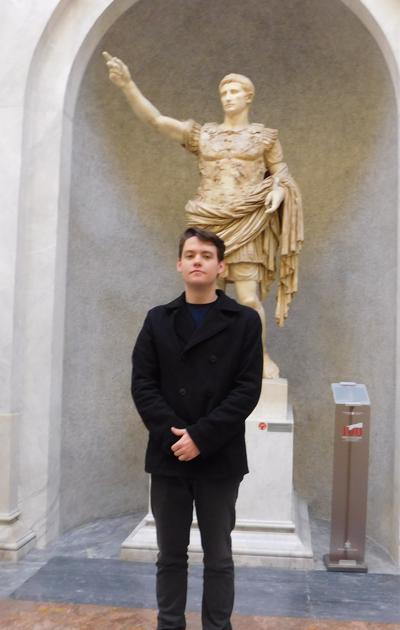Rome 2019
Below are two photos of statues of Augustus Caesar. Augustus was the son of Julius Caesar who was famously assassinated at The Theater of Pompey in 44 BC. Augustus took control in 27 BC at the age of 36 and ruled until his death in August 14 AD. Augustus was in control at an extremely formative time in Rome, a time of extended peace known as the Pax Romana aside from wars of conquest which expanded the territory of the empire there were no major wars or battles. That is why the two sculptures below capture who Augustus
dscamp98
12 chapters
16 Apr 2020
Statues of Augustus Caesar
January 08, 2019
|
The Vatican Museum and National Roman Museum
Below are two photos of statues of Augustus Caesar. Augustus was the son of Julius Caesar who was famously assassinated at The Theater of Pompey in 44 BC. Augustus took control in 27 BC at the age of 36 and ruled until his death in August 14 AD. Augustus was in control at an extremely formative time in Rome, a time of extended peace known as the Pax Romana aside from wars of conquest which expanded the territory of the empire there were no major wars or battles. That is why the two sculptures below capture who Augustus


was as an emperor so magnificently. In the first Augustus is seen wearing a robe with its hood raised, these are the robes that to the citizens of Rome are known to belong to the Pontifus Maximus, great bridge builder, or pope, and the hood being raised symbolizing being actively involved in preaching duties or religious ceremonies. Though never an active priest the clothing is symbolic of his role in maintaining a good relationship between the church and state as Rome’s first emperor. When this is combined with the second statue the image of who Augustus was becomes clear as day. In this he is depicted wearing common military armor obviously symbolic of his successes as a militant in expanding and protecting the roman territory but what he is holding is more intriguing. It is a toga, the common garb of a roman citizen of the which seems to be symbolic that though he was a great and powerful man and leader he was also a man of the people who wanted only the best for his empire and his people. My favorite quote from Augustus that I think exemplifies who he was as a man is as follows: “I found Rome a city of bricks and left it a city of marble.” Meaning he took Rome which was already great and made everything even better by literally and metaphorically adding the fine rock of marble to it.
Share your travel adventures like this!
Create your own travel blog in one step
Share with friends and family to follow your journey
Easy set up, no technical knowledge needed and unlimited storage!